Cloud Architecture: A Comprehensive Guide
We will walk you through the cloud.
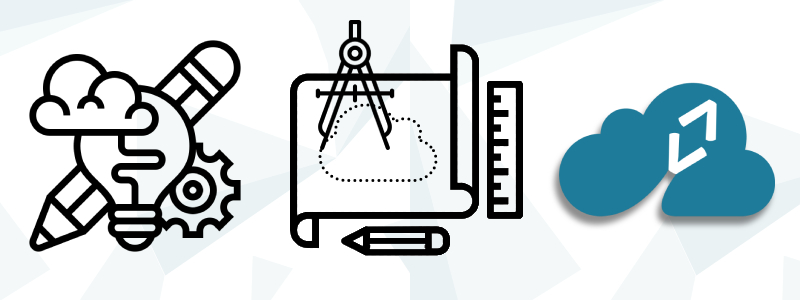
Introduction
Cloud architecture encompasses a cloud computing system’s fundamental design and framework, confining its infrastructure, services, applications, and data centers. This comprehensive framework defines the utilization and interconnectivity of cloud resources, making it indispensable for organizations seeking to migrate their existing systems to the cloud or embark on cloud-native transformations. By optimizing cloud architecture, businesses can harness the full potential of cloud computing, unlocking scalability, flexibility, and efficiency in their operations. Discover the transformative power of cloud architecture as it empowers organizations to embrace the future of technology and propel their digital journeys to new heights.
What is Cloud Architecture?
Cloud architecture is the design and structure of a cloud computing system. It combines all the components of a cloud computing system, such as the infrastructure, services, applications, and data centers. It is responsible for defining how cloud resources are used and how they interact with each other. It is essential for organizations looking to transition their existing systems into cloud enviroments or those rearchitecting their systems from the ground up to become cloud-native.
Cloud architecture is a complex system and requires careful planning and consideration. It involves a number of different components, such as hardware, software, and networking. The cloud architecture must be designed in such a way that it is secure, efficient, and scalable. It must also be able to integrate with existing systems, as well as be able to handle large amounts of data.
What are the Components of Cloud Architecture?
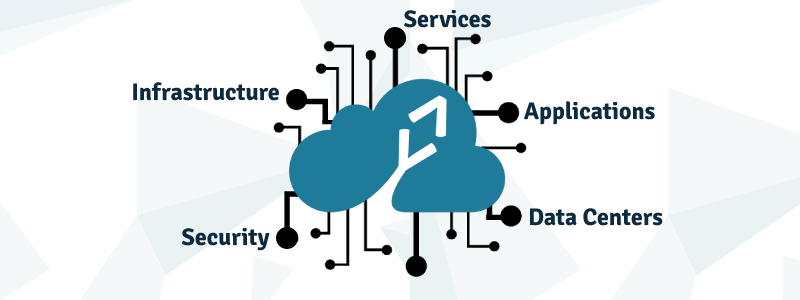
Cloud architecture consists of several different components.
- Infrastructure
The infrastructure component of cloud architecture provides the underlying hardware and software components necessary for cloud services. This includes servers, storage, networking, and other related features.
- Services
The services part of cloud architecture is responsible for providing the specific services that are available on the cloud. This includes web services, database services, and various connected services.
- Applications
The applications segment of cloud architecture is responsible for the applications that run on the cloud. These applications can be web-based, mobile-based, or desktop-based.
- Data Centers
The data centers element of cloud architecture provides the physical facilities necessary for hosting cloud services. This includes servers, storage, networking, and other components.
- Security
The security component of cloud architecture is responsible for security measures to ensure that the cloud is secure. This includes authentication, access control, encryption, and other safety actions.
What are the Benefits of Cloud Architecture?

Cloud architecture offers numerous advantages for organizations seeking to migrate their current systems to the cloud or those aiming to build cloud-native systems from scratch.
Scalability
One of the major benefits of cloud architecture is that it allows organizations to scale their cloud resources up or down quickly and easily.
This allows organizations to meet the changing needs of their customers and applications.
Cost Savings
Cloud architecture also allows organizations to reduce costs by eliminating the need to purchase and maintain hardware and software components.
This allows organizations to save money in the long run by decreasing their overall IT costs.
Improved Security
Cloud architecture also provides organizations with improved security by providing access control measures, encryption, and other related measures.
This ensures the cloud is secure for its data and applications.
Faster Deployment
Cloud architecture also allows organizations to deploy applications faster. This is because cloud resources can be quickly and easily provisioned, allowing applications to be deployed much quicker than traditional methods.
What are the Risks Associated with Cloud Architecture?
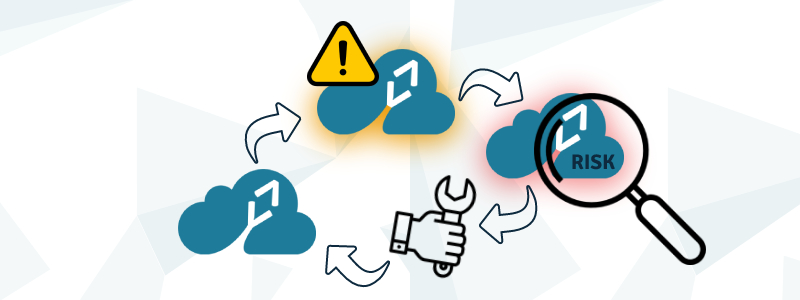
Cloud architecture brings numerous benefits, but being aware of potential risks is important. Some of the common risks associated with cloud architecture include:
- Security Vulnerabilities
If proper security measures are not implemented, cloud systems may be susceptible to security breaches, unauthorized access, or data leaks. Adopting robust security practices, including encryption, access controls, and regular security audits, is crucial.
- Data Loss or Disruption
Although cloud providers have reliable infrastructure, technical failures, natural disasters, or human errors can lead to data loss or service disruptions. Implementing data backups, redundancy strategies, and disaster recovery plans can help mitigate these risks.
- Vendor Lock-In
Organizations relying heavily on a specific cloud provider may face challenges if they switch providers or adopt a multi-cloud strategy. It is essential to consider portability and interoperability when designing cloud architecture to avoid vendor lock-in.
- Compliance and Legal Issues
Organizations operating in regulated industries must ensure compliance with industry-specific regulations and data privacy laws. Cloud architecture should address compliance requirements, including data residency, privacy protection, and contractual agreements with cloud providers.
- Cost Management
Without proper monitoring and optimization, cloud costs can escalate quickly. It is essential to have mechanisms in place to track and manage resource utilization, optimize workloads, and implement cost-control strategies.
By understanding these risks, organizations can develop robust risk management strategies and work closely with cloud providers to mitigate potential challenges, ensuring a secure and efficient cloud architecture environment.
How is Cloud Architecture Different from Traditional Architecture?
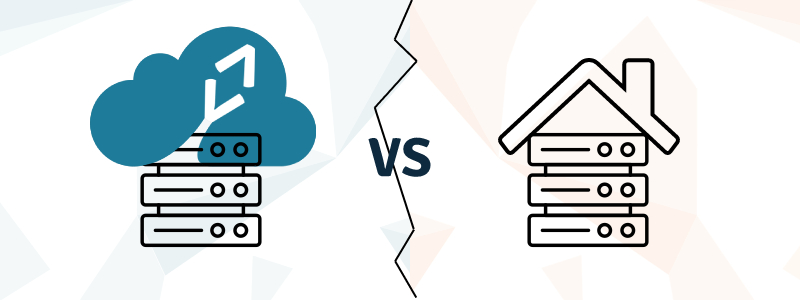
Cloud architecture is different from traditional architecture in a number of ways.
- Flexibility: Cloud architecture is much more flexible than traditional architecture. This is because cloud resources can be quickly and easily provisioned, allowing organizations to meet their changing needs quickly and easily.
- Scalability: Cloud architecture also allows organizations to scale their cloud resources up or down quickly and easily. This allows organizations to meet the changing needs of their customers and applications.
- Cost Savings: Cloud architecture also allows organizations to reduce their costs by eliminating the need to purchase and maintain hardware and software components. This allows organizations to save money in the long run by decreasing their overall IT costs.
- Security: Cloud architecture also provides organizations with improved security by providing access control measures, encryption, and other related measures. This ensures that the cloud is secure for the data and applications that are stored on it.
What are the Different Types of Cloud Architecture?
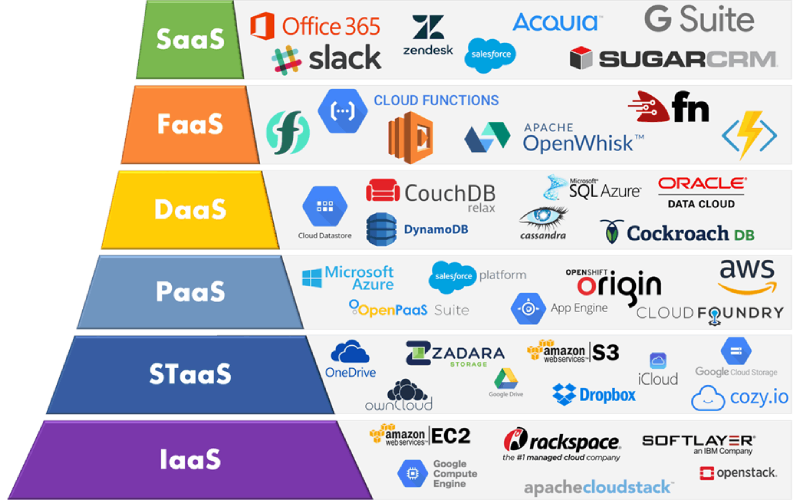
There are several different model types of cloud architecture.
Software as a Service (SaaS):
SaaS delivers software applications over the internet on a subscription basis. Users can access and use the software through web browsers without the need for installation or maintenance. Popular examples of SaaS include customer relationship management (CRM) systems, email services, and productivity suites.
Function as a Service (FaaS):
FaaS, also known as serverless computing, allows developers to write and execute code in the form of individual functions. The cloud provider takes care of infrastructure management, scaling, and resource allocation. Developers can focus on writing code and pay only for the actual execution time and resources used.
Backend as a Service (BaaS):
BaaS provides pre-built backend services for mobile and web applications. It offers features like user management, database storage, push notifications, and social media integration, allowing developers to accelerate application development by leveraging pre-existing backend components.
Platform as a Service (PaaS):
PaaS provides a complete development and deployment environment for applications. It abstracts away the underlying infrastructure and provides a platform that includes operating systems, development tools, databases, and other services. Developers can focus on building and deploying applications without worrying about infrastructure management.
Storage as a Service (STaaS):
STaas is a cloud computing model that provides users with storage resources and services over the internet on a subscription basis. With STaaS, organizations can store and access their data in the cloud without investing in and managing physical storage infrastructure. In the STaaS model, cloud service providers offer scalable and secure storage solutions, allowing users to store, retrieve, and manage their data remotely. Users typically pay for their storage capacity, and the cloud provider handles the underlying hardware, maintenance, and data redundancy.
Infrastructure as a Service (IaaS):
IaaS provides virtualized computing resources over the internet. It offers organizations the flexibility to provision and manage virtual machines, storage, and networking infrastructure without physical hardware. Users have control over the operating systems, applications, and data hosted on the infrastructure.
These different cloud architecture models cater to diverse needs, ranging from infrastructure provisioning to full-fledged application services, enabling organizations to choose the most suitable model for their specific use cases and requirements.
What Strategies Can Be Used to Ensure Security in a Cloud Architecture?

Organizations must ensure they have the necessary security measures to protect their data and applications in a cloud architecture. A few of the strategies that can be used to ensure security in a cloud architecture include:
- Authentication: Organizations must ensure that they have authentication measures in place to ensure that only authorized users can access cloud resources. This includes using strong passwords and two-factor authentication.
- Access Control: Organizations must also ensure that they have access control measures in place to ensure that only authorized users are able to access cloud resources. This includes using roles-based access control and other related standards.
- Encryption: Organizations must also ensure that they have encryption measures in place to ensure that data stored on the cloud is secure. This includes using secure encryption algorithms and other related standards.
- Monitoring: Organizations must also ensure that they have monitoring measures to ensure that cloud resources are used appropriately. This includes using logging and other related measures.
How Can Cloud Architecture Be Used to Improve Customer Experience?
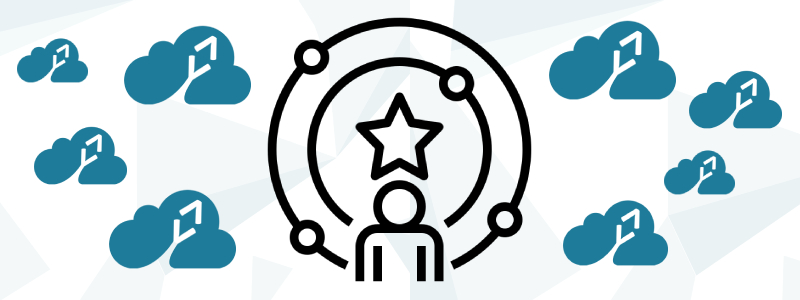
Cloud architecture offers significant opportunities for improving customer experience by leveraging its key capabilities and features.
Firstly, cloud architecture enables organizations to achieve agility in deploying and managing applications. With the ability to quickly provision resources and streamline deployment processes, businesses can efficiently roll out updates, features, and bug fixes to their customers, ensuring a seamless and up-to-date experience.
Secondly, cloud architecture provides scalability and elasticity, allowing organizations to dynamically adjust their resources based on customer demand. This flexibility ensures that customer-facing systems can handle varying levels of traffic without sacrificing performance or user experience. By easily scaling resources up or down, businesses can deliver consistent service quality, even during peak periods, and avoid any disruptions or slowdowns that could negatively impact customer satisfaction.
Moreover, cloud architecture enhances security and reliability, enabling organizations to protect customer data and ensure uninterrupted service availability. With advanced security measures, data encryption, and redundant infrastructure, businesses can instill confidence in their customers that their information is safeguarded and their interactions with the company are protected. This fosters trust, which is vital for building long-term customer relationships.
If you are not familiar with Cloud Architecture and you want to know where to start, take a look at this video:

Any Questions? Fell free to reach out with your doubts!
Contact -> https://kodlot.com/#contact
LinkedIn -> https://www.linkedin.com/company/kodlot/
